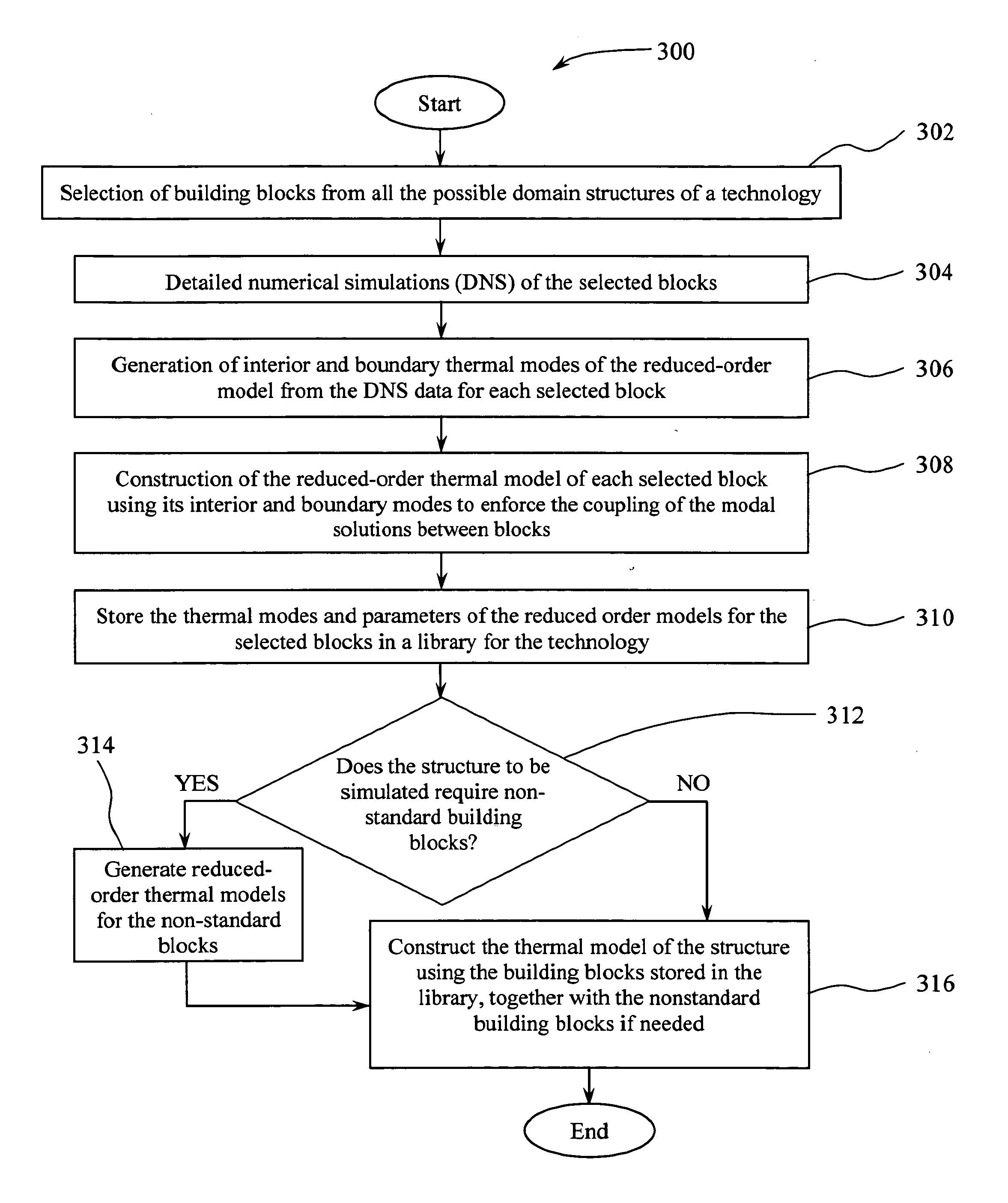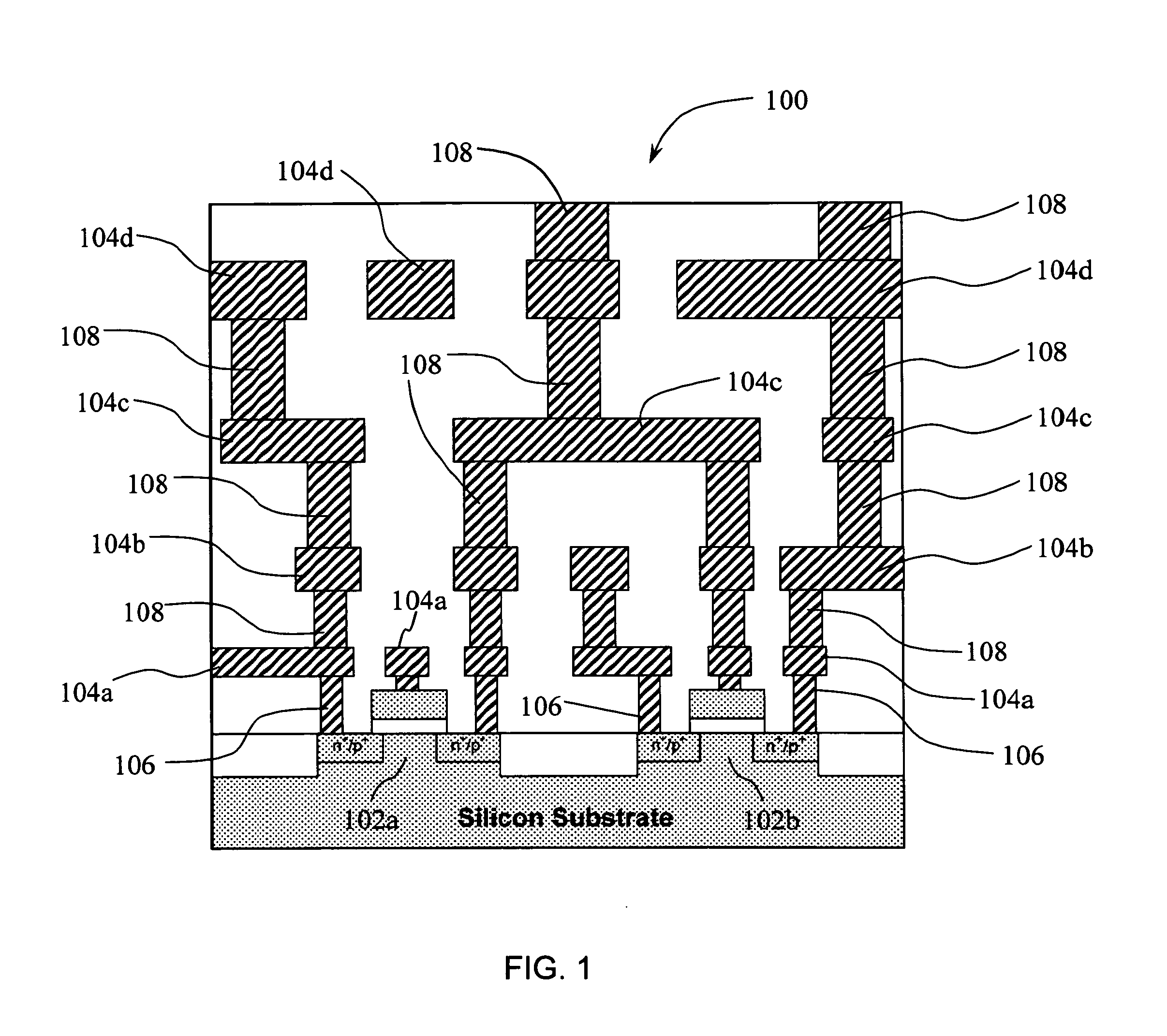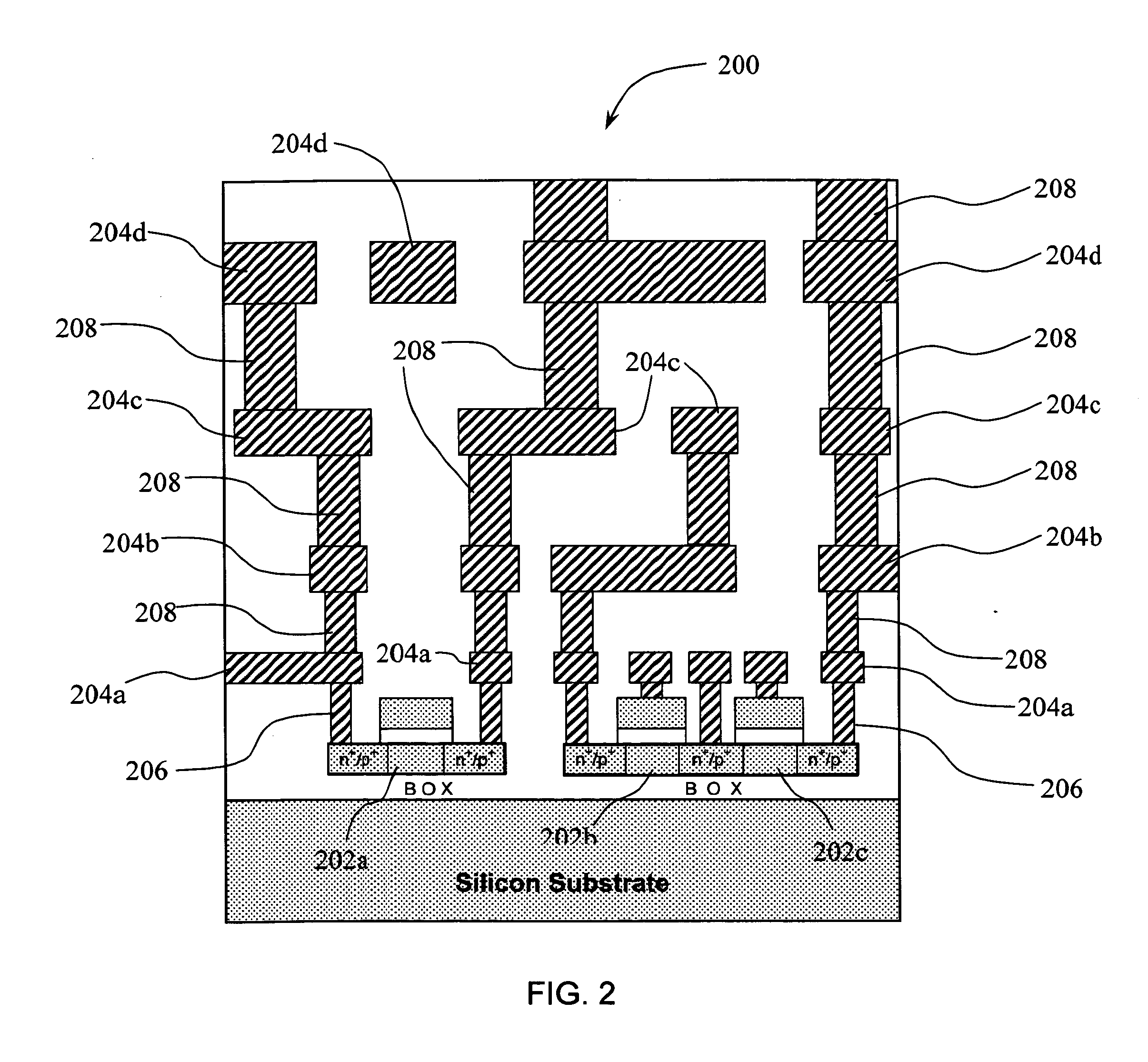Method for thermal simulation
a thermal simulation and method technology, applied in the field of thermal analysis and thermal optimization, can solve the problems of heat generation, cost-effective design of ics and systems, dissipation power, etc., and achieve the effects of reasonable computational cost, efficient electro-thermal simulation, and realistic reliability assessmen
- Summary
- Abstract
- Description
- Claims
- Application Information
AI Technical Summary
Benefits of technology
Problems solved by technology
Method used
Image
Examples
Embodiment Construction
[0042]Embodiments of the present invention provide two efficient and accurate methods for 3D steady-state and transient thermal simulation in a block-based structure, including but not limited to semiconductor chips and packages, photovoltaic modules and panels, and battery packs, etc. The methods are able to obtain the temperature profile in a structure as detailed as a full-scale numerical simulation at a small fraction of the computational cost that is currently possible. In this description, the procedure, theory and concept of the methods of the invention are presented based on semiconductor chips. These can also be applied to other block-based structures.
[0043]The methods can evaluate 3D thermal profiles efficiently at different levels of resolution, as fine as the device junction or average device temperature or as coarse as the average temperature of a standard cell, a large circuit block, or even a die. In addition, the methods can be applied to efficient 3D thermal and ele...
PUM
 Login to View More
Login to View More Abstract
Description
Claims
Application Information
 Login to View More
Login to View More - R&D
- Intellectual Property
- Life Sciences
- Materials
- Tech Scout
- Unparalleled Data Quality
- Higher Quality Content
- 60% Fewer Hallucinations
Browse by: Latest US Patents, China's latest patents, Technical Efficacy Thesaurus, Application Domain, Technology Topic, Popular Technical Reports.
© 2025 PatSnap. All rights reserved.Legal|Privacy policy|Modern Slavery Act Transparency Statement|Sitemap|About US| Contact US: help@patsnap.com



